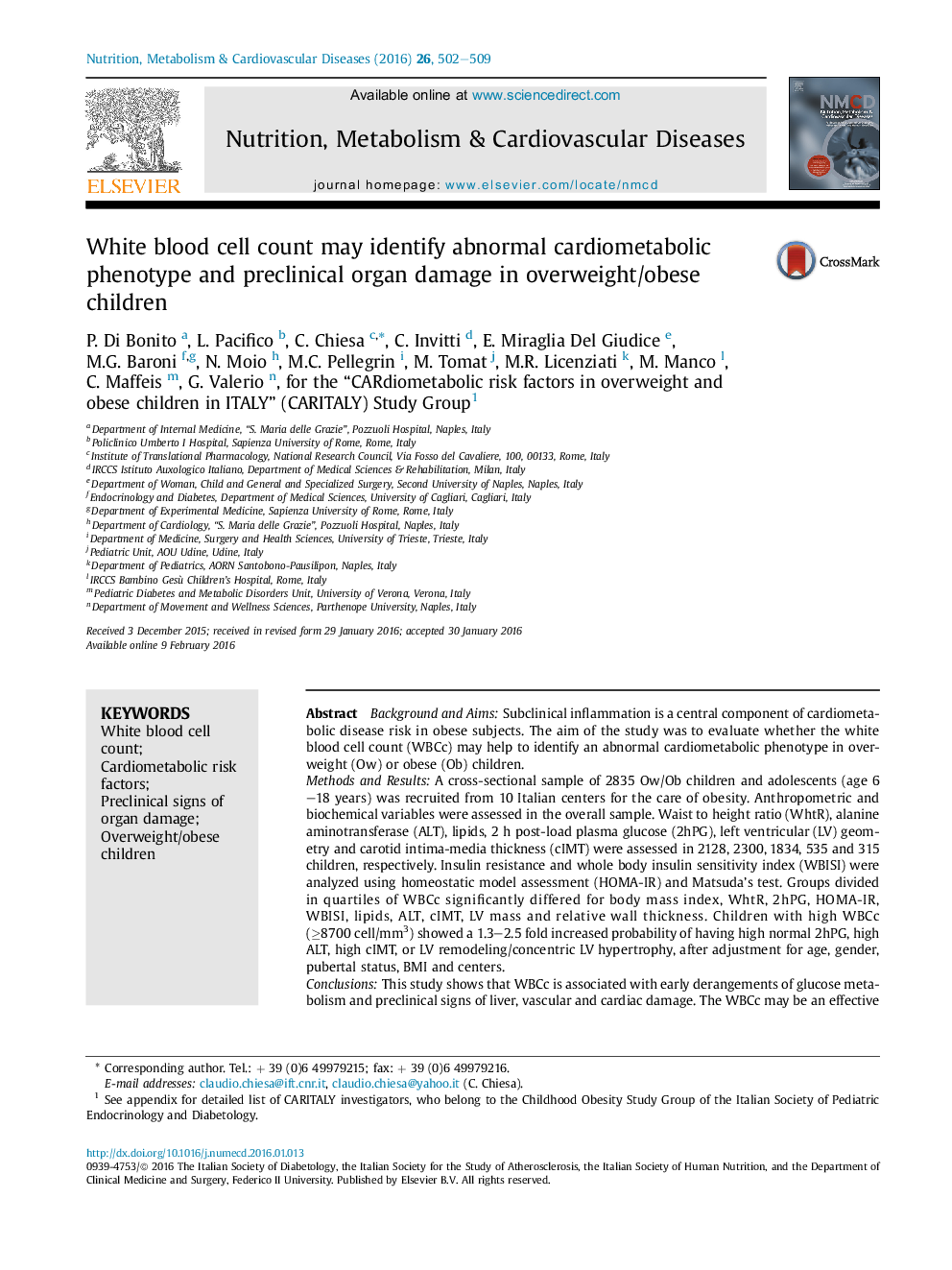| Article ID | Journal | Published Year | Pages | File Type |
|---|---|---|---|---|
| 5996358 | Nutrition, Metabolism and Cardiovascular Diseases | 2016 | 8 Pages |
â¢In overweight/obese children, high WBCc is associated with altered glucose metabolism.â¢In overweight/obese children, high WBCc is associated with subclinical signs of cardiac, vascular and liver damage.â¢WBCc may be an effective and low-cost tool for identifying overweight/obese children at the greatest risk of potential complications.
Background and AimsSubclinical inflammation is a central component of cardiometabolic disease risk in obese subjects. The aim of the study was to evaluate whether the white blood cell count (WBCc) may help to identify an abnormal cardiometabolic phenotype in overweight (Ow) or obese (Ob) children.Methods and ResultsA cross-sectional sample of 2835 Ow/Ob children and adolescents (age 6-18 years) was recruited from 10 Italian centers for the care of obesity. Anthropometric and biochemical variables were assessed in the overall sample. Waist to height ratio (WhtR), alanine aminotransferase (ALT), lipids, 2 h post-load plasma glucose (2hPG), left ventricular (LV) geometry and carotid intima-media thickness (cIMT) were assessed in 2128, 2300, 1834, 535 and 315 children, respectively. Insulin resistance and whole body insulin sensitivity index (WBISI) were analyzed using homeostatic model assessment (HOMA-IR) and Matsuda's test. Groups divided in quartiles of WBCc significantly differed for body mass index, WhtR, 2hPG, HOMA-IR, WBISI, lipids, ALT, cIMT, LV mass and relative wall thickness. Children with high WBCc (â¥8700 cell/mm3) showed a 1.3-2.5 fold increased probability of having high normal 2hPG, high ALT, high cIMT, or LV remodeling/concentric LV hypertrophy, after adjustment for age, gender, pubertal status, BMI and centers.ConclusionsThis study shows that WBCc is associated with early derangements of glucose metabolism and preclinical signs of liver, vascular and cardiac damage. The WBCc may be an effective and low-cost tool for identifying Ow and Ob children at the greatest risk of potential complications.
